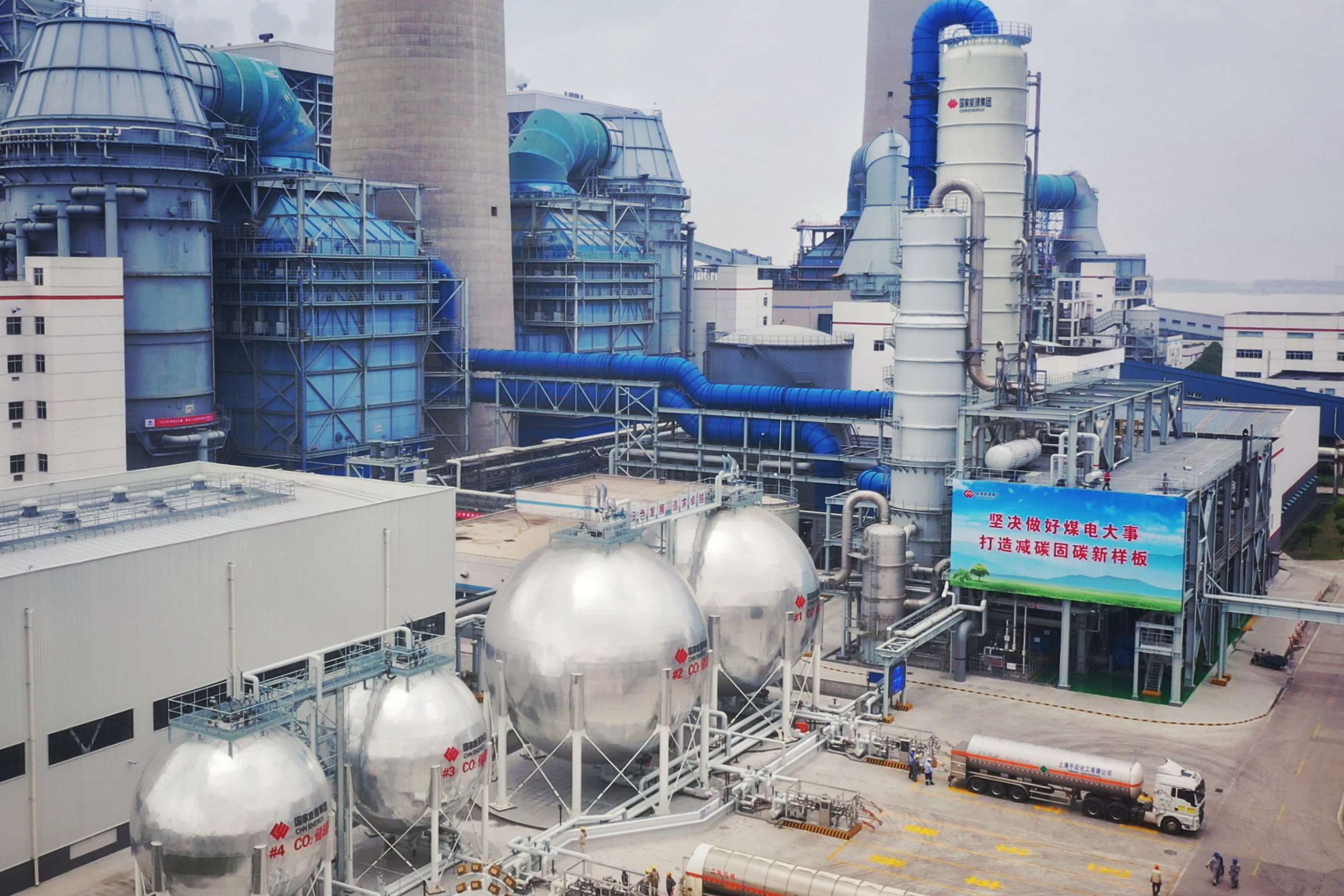
Asia's largest carbon capture, utilization and storage (CCUS) project was officially put into operation in Taizhou, east China's Jiangsu province on June 2.?(Photo?provided?by?China Energy)
By?Staff?Reporters
Asia's largest carbon capture, utilization and storage (CCUS) project was officially put into operation in Taizhou, east China's Jiangsu province on June 2, according to China Energy Investment Corporation (China Energy), the project developer.
The CCUS project, built in the coal-fired power plant under China Energy, can capture and process 500,000 tons of carbon dioxide annually. Its successful operation marks the maturing of China's large-scale application of CCUS technology in coal power sector, laying a solid foundation for further promotion of CCUS technology.
By optimizing the coupling of the large carbon capture system and power plant thermal system, the project achieved a carbon dioxide capture rate of more than 90 percent and the power consumption was less than 90 kWh per ton of captured carbon, said Ji Mingbin, president of China Energy Jiangsu Branch.
Since fossil fuels continue to dominate the world's energy consumption, CCUS technology, which can capture carbon emissions from fossil power generation and industrial processes, plays a vital role in large-scale carbon emission reduction in fossil energy usage and helps achieve the goal of carbon neutrality.
The trio will conduct a series of experiments in fields such as life science, fluid physics, combustion science and materials science. Notably, this is the first time that fruit flies have been taken on a Chinese space mission as experimental subjects. What made scientists choose fruit flies? What experiment will they undergo?
